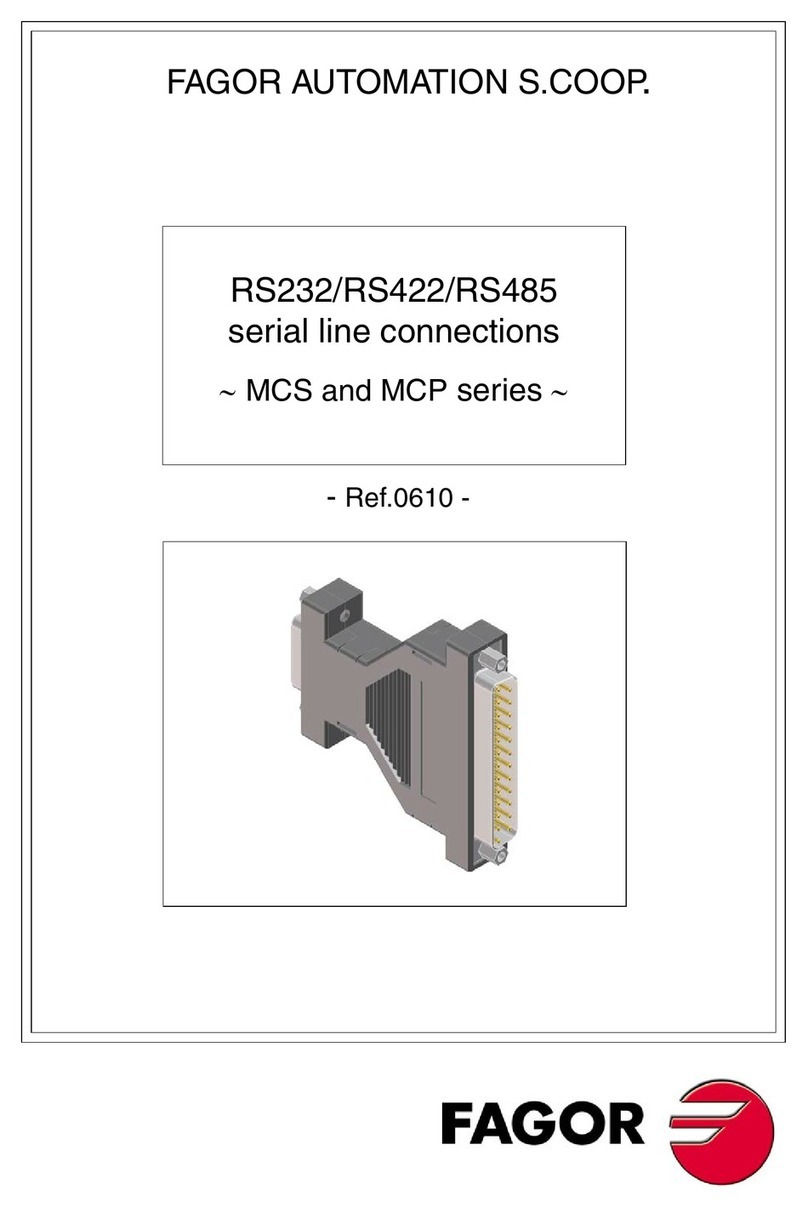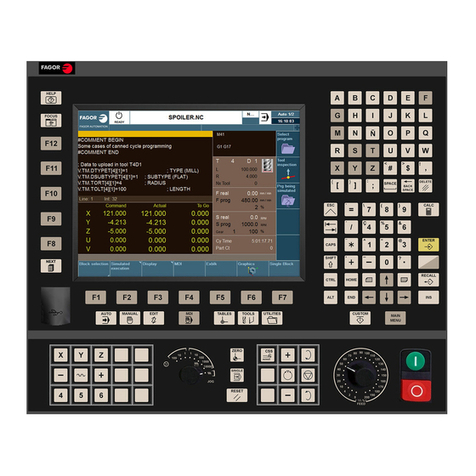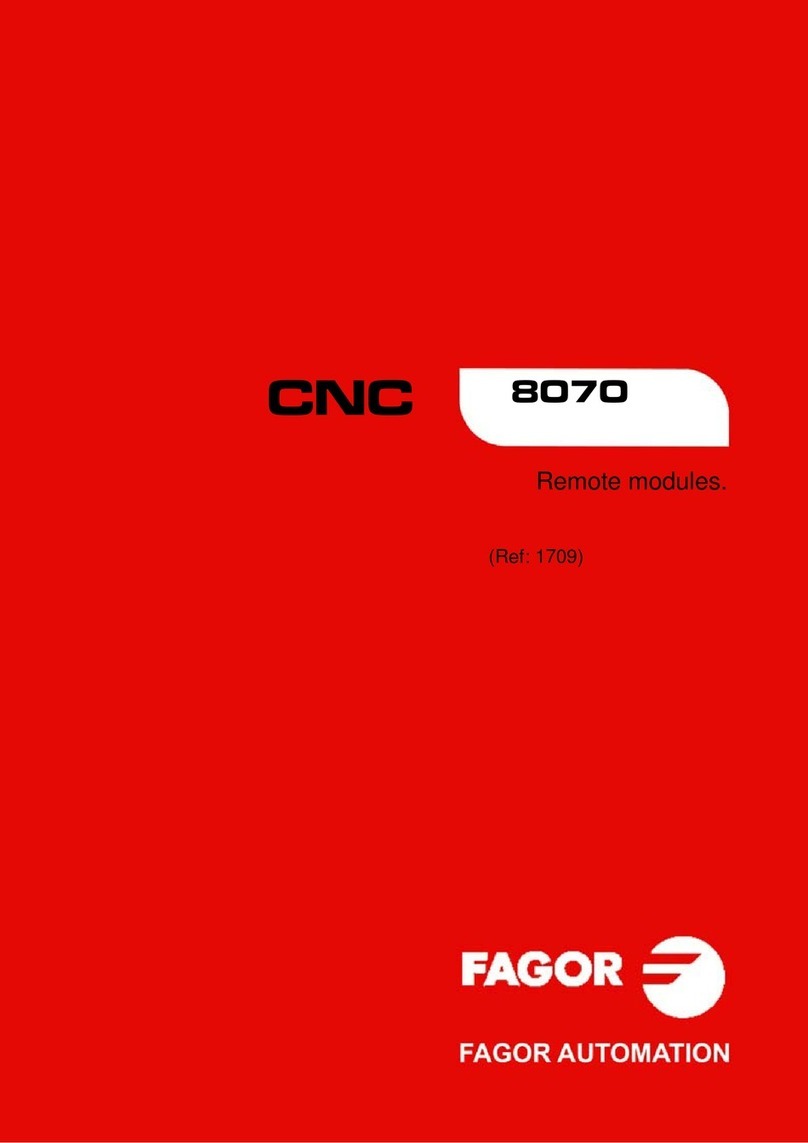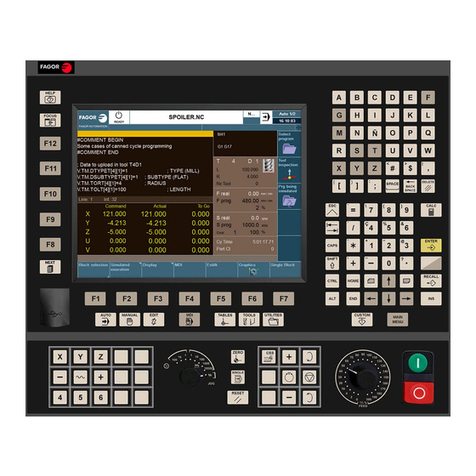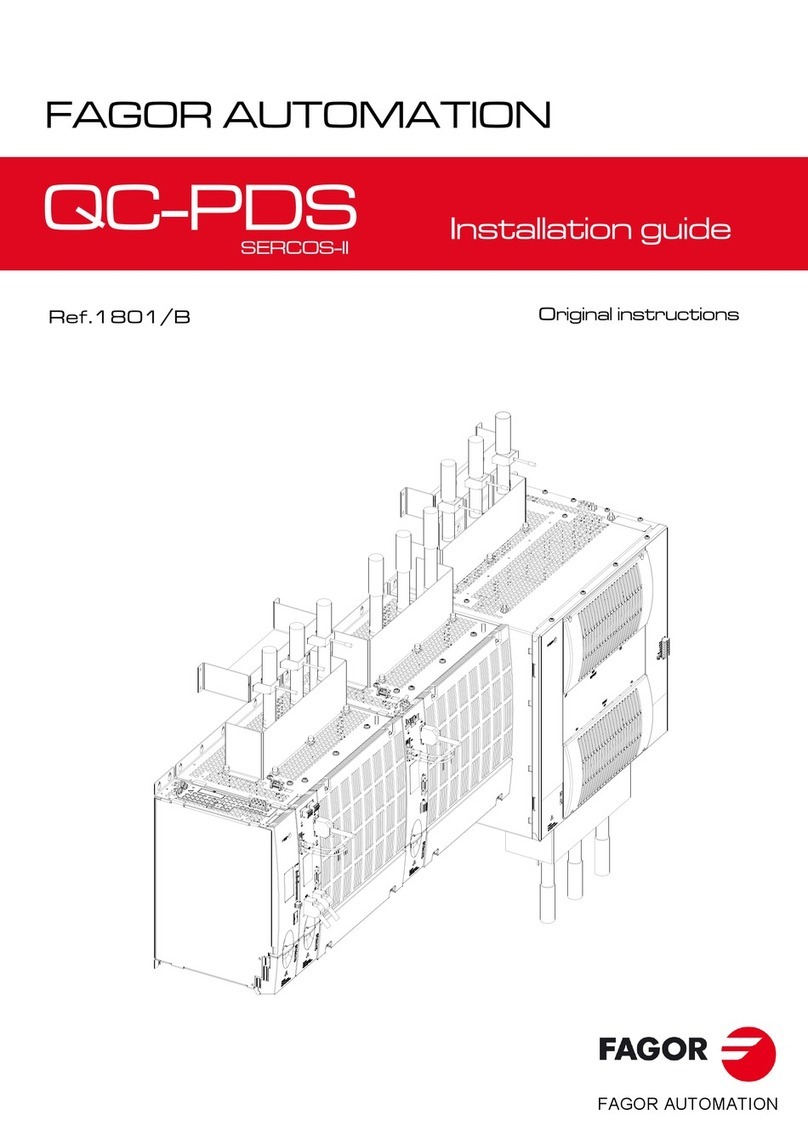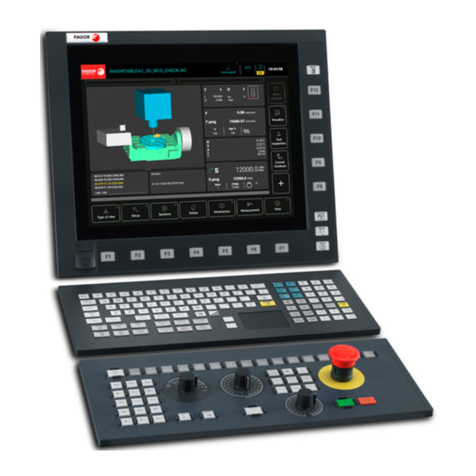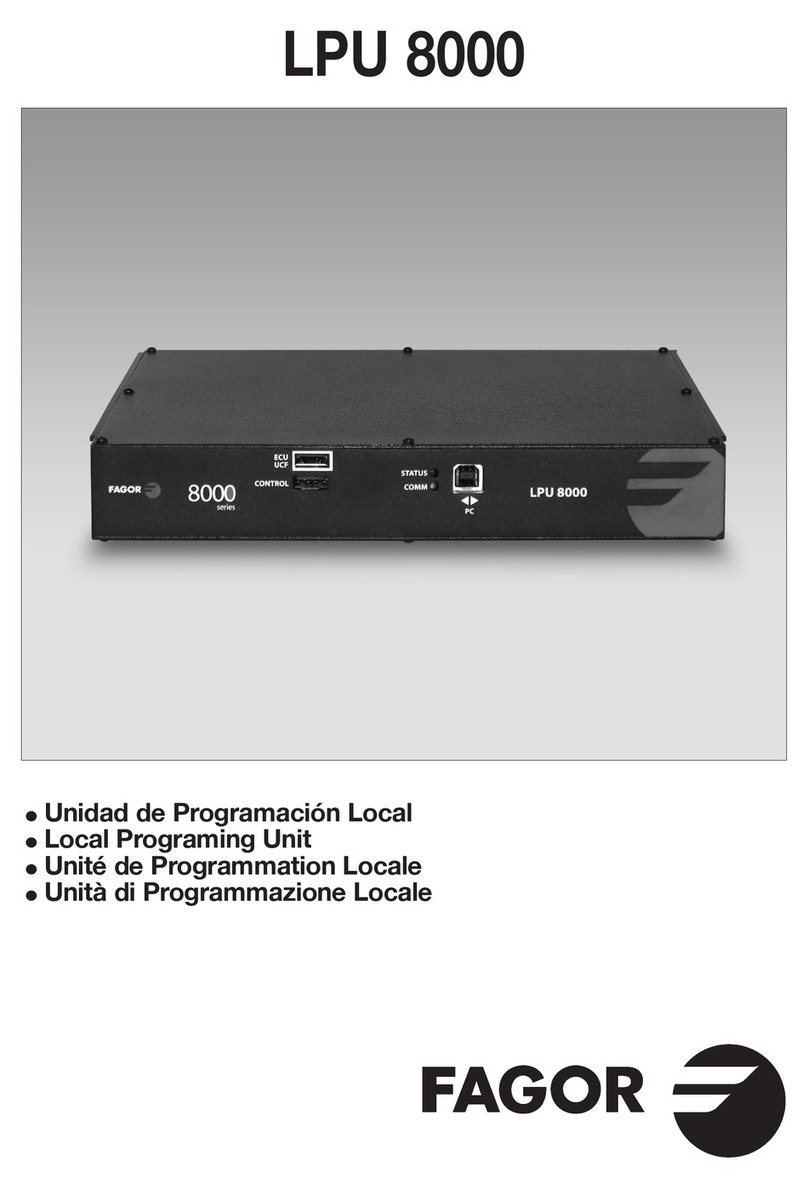Operating manual
CNC 8055
CNC 8055i
·MCO/TCO·
OPTION
·3·
INDEX
CHAPTER 1 GENERAL CONCEPTS
1.1 M/T and CO work mode................................................................................................... 5
1.2 Keyboard.......................................................................................................................... 6
1.3 Keyboard customizing...................................................................................................... 9
CHAPTER 2 OPERATING IN JOG MODE
2.1 Introduction .................................................................................................................... 12
2.1.1 Standard screen of the CO mode. ............................................................................. 12
2.1.2 Auxiliary screen of the CO mode. .............................................................................. 14
2.2 Axis control .................................................................................................................... 16
2.2.1 Work units .................................................................................................................. 16
2.2.2 Coordinate preset....................................................................................................... 16
2.2.3 Managing the axis feedrate (F) .................................................................................. 16
2.3 Home search..................................................................................................................17
2.4 Jog movement ............................................................................................................... 18
2.4.1 Movement to the programmed coordinate ................................................................. 18
2.4.2 Incremental movement............................................................................................... 18
2.4.3 Continuous movement ............................................................................................... 19
2.4.4 Movement with an electronic handwheel ................................................................... 20
2.5 Tool control .................................................................................................................... 24
2.5.1 Single tool change point............................................................................................. 24
2.5.2 Variable tool change point.......................................................................................... 25
2.5.3 Live tool...................................................................................................................... 26
2.6 Spindle control ............................................................................................................... 28
2.6.1 Spindle in rpm ............................................................................................................ 29
2.6.2 Constant surface speed ............................................................................................. 30
2.7 ISO management........................................................................................................... 32
CHAPTER 3 WORKING WITH OPERATIONS OR CYCLES
3.1 Associated programs ..................................................................................................... 35
3.2 Associated subroutines.................................................................................................. 35
3.3 OEM cycles.................................................................................................................... 36
3.3.1 Define the screen ....................................................................................................... 36
3.3.2 Configuration file ........................................................................................................ 37
3.3.3 Associated subroutine................................................................................................ 41
3.3.4 Error log file (P999500) .............................................................................................. 43
3.4 Access to OEM cycles from the PLC ............................................................................. 44
3.5 Cycle data entry .............................................................................................................45
3.6 Simulation and execution............................................................................................... 46
3.7 Background cycle editing ............................................................................................... 46
3.8 Positioning cycle ............................................................................................................47
3.8.1 Definition of data ........................................................................................................ 48
3.8.2 Definition of spindle conditions................................................................................... 49
3.8.3 Definition of machining conditions.............................................................................. 49
CHAPTER 4 SAVING PROGRAMS
4.1 List of saved programs................................................................................................... 52
4.2 See the contents of a program....................................................................................... 53
4.2.1 See one of the cycles in detail ................................................................................... 53
4.3 Edit a new part-program ................................................................................................ 54
4.3.1 Saving an ISO block or a cycle .................................................................................. 54
4.4 Delete a new part program ............................................................................................ 55
4.5 Copying a part-program into another one ...................................................................... 55
4.6 Modify a part-program.................................................................................................... 56
4.6.1 Delete an operation.................................................................................................... 56
4.6.2 Move an operation to another position....................................................................... 56
4.6.3 Add or insert a new operation .................................................................................... 57
4.6.4 Modify an existing operation ...................................................................................... 57












